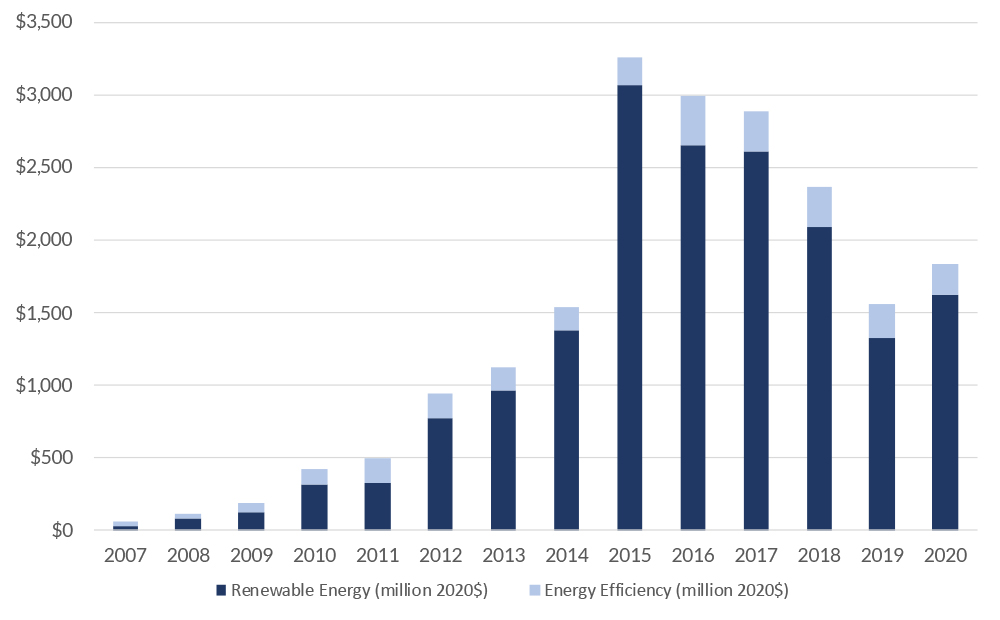Clean energy investments in North Carolina ballooned from $56.5 million in 2007 to $19.8 billion in 2020, according to a report by RTI International for the North Carolina Sustainable Energy Association.
The study looked at the impact of the Renewable Energy and Energy Efficiency Portfolio Standard enacted in 2007, which required investor-owned utilities to meet up to 12.5% of their retail electricity sales through renewables or energy efficiency by 2021; for rural electric cooperatives and municipal electric suppliers, the requirement is 10%. By now, the report states, “utilities have accumulated sufficient renewable energy credits to satisfy the targets.”
The $19.8 billion includes $17.4 billion spent on the construction and installation of renewable energy projects, including solar PV ($15.8 billion), biomass ($764 million) and wind ($430 million). Another $2.4 billion was spent on energy efficiency.

Spending peaked at $3.1 billion in 2015 — when renewable energy investment tax credits expired — then dropped sharply for the next four years. It bottomed out at $1.3 billion in 2019 before rebounding last year to $1.6 billion.
The North Carolina government contributed about $1.5 billion to clean energy development from 2007 to 2020, less than one-thirteenth of the total. Almost all the state aid was in the form of tax credits, though the state also funded $19.6 million in energy efficiency projects.
Economic Impact
The spending generated $1.4 billion in state and local tax revenues, added $22.5 billion to gross state product and supported 291,183 annual full-time equivalents. Including secondary effects, total economic activity from clean energy efforts came to $40.8 billion.
In a state that includes both the advanced high-tech Research Triangle Park area, where RTI has its headquarters, and impoverished rural areas, the report noted that “renewable energy projects are widely distributed across North Carolina, bringing investment to both urban and rural counties.”
Renewable energy facilities generated 63.4 GWh of power, which “resulted in a total of $3.9 billion in avoided cost and retail energy savings no longer spent on conventional energy,” researchers said. Just over half (52%) of those savings came from solar PV, 32.4% from biomass, 8% from landfill gas and 4.1% from wind.
Utility companies’ energy efficiency programs saved 42.9 million MWh in North Carolina from 2007 to 2020, which amounts to $2.6 billion in savings, assuming electricity costs about 6 cents/kWh. To this should be added energy savings of $1.7 billion documented by the state government’s Utility Savings Initiative, for “total energy efficiency savings of $4.3 billion,” the report states.



